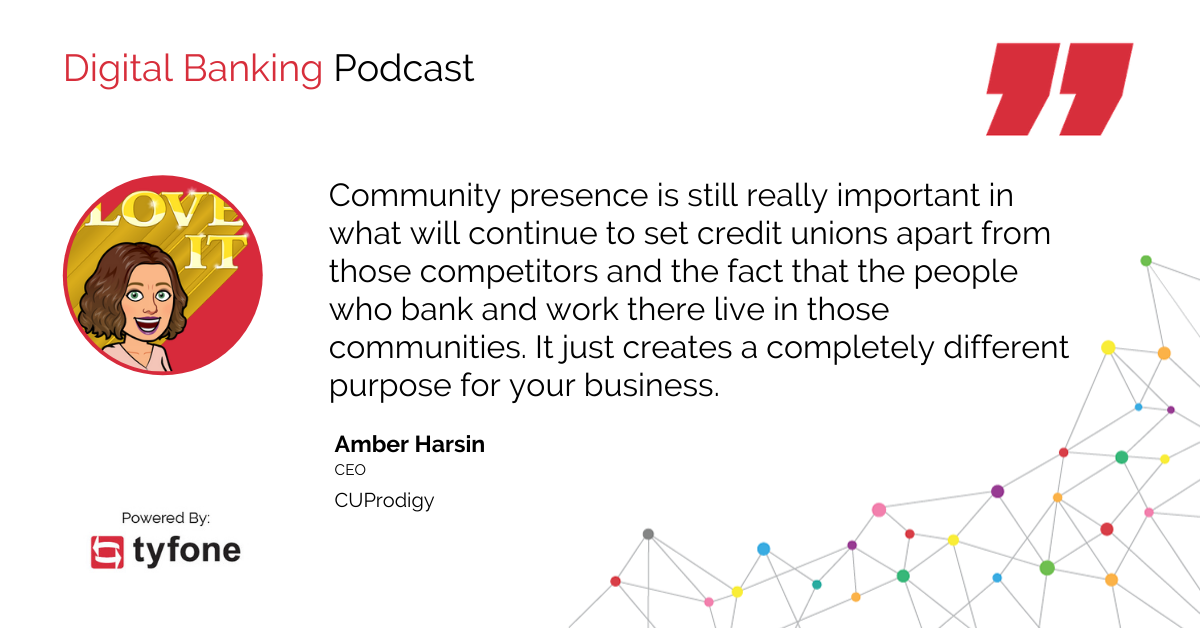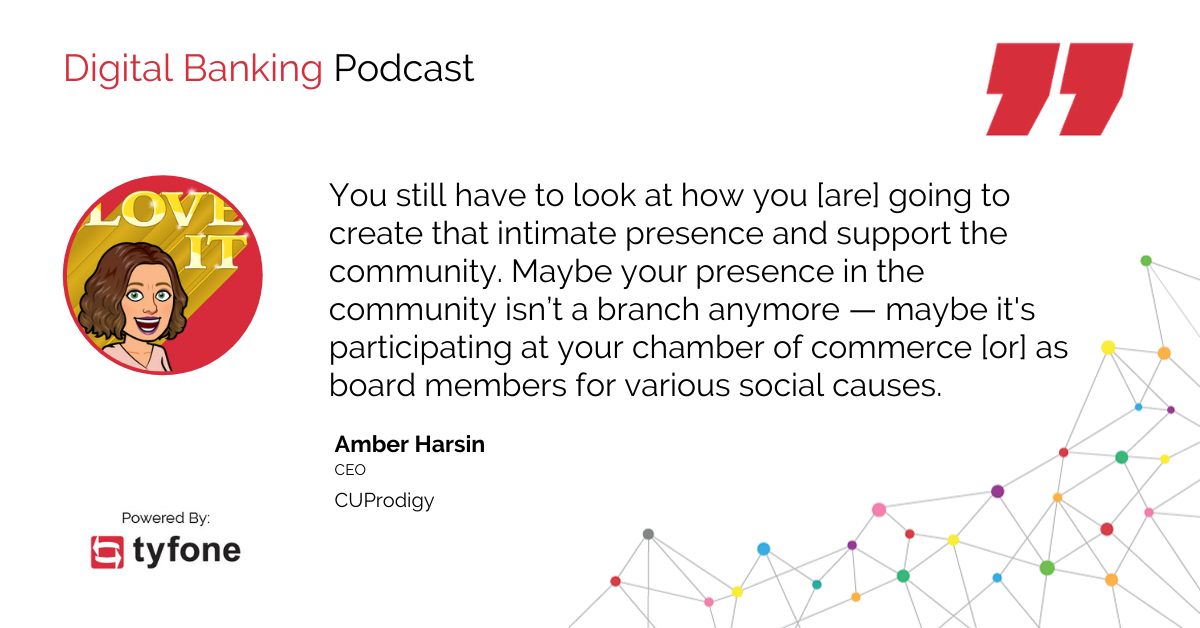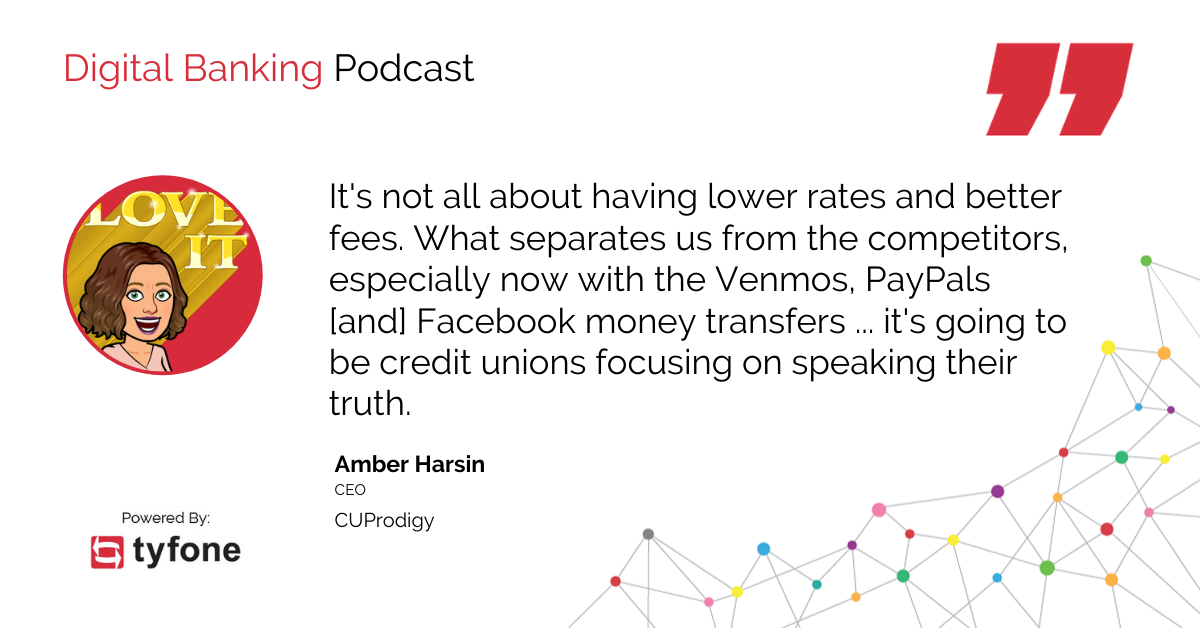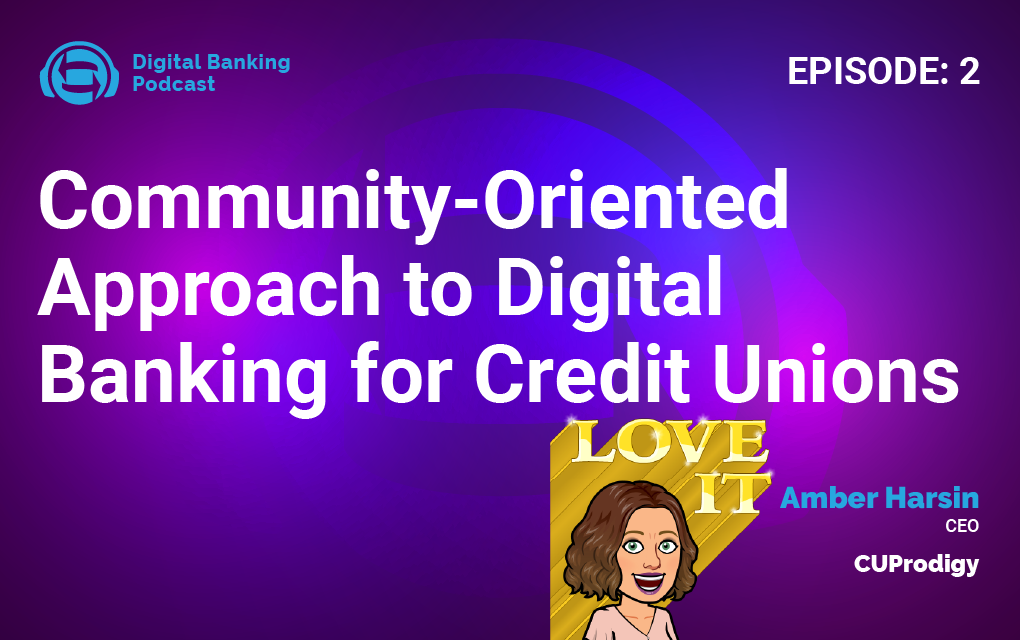Communities Need Credit Unions: Here’s How They Can Grow In A Digital Landscape

Amber Harsin
CEO
- A core technology provider like CUProdigy can help credit unions manage user experiences, aggregate data, and find opportunities to help members.
- Traditional banks offer convenience to beat out credit unions — while technology providers can help credit unions retaliate in numerous ways, they can also hold them back.
- Technology has knocked down barriers to digital banking, and credit unions can create an intimate presence in their communities. One idea? Self-service kiosks.
Nearly 30 years ago, a group of credit unions received a grim call from their data processing vendor: They declared bankruptcy, and the credit unions needed to find a new vendor.
Instead of throwing in the towel, the credit unions got bold — since they weren’t impressed with the available market options, they formed a credit union service organization (CUSO), which provides financial and/or operational services.
Then, they bought the software to seal the deal. That’s how CUProdigy was born.
The CUSO model speaks to the strength of credit unions when they band together with powerful technology — and the influential decisions CUProdigy has made since then highlight the genesis of the initial partnership.
CUProdigy, a credit union data processing platform, leads with a people-first approach to better serve its customers, one that CEO Amber Hasin has perfected in her dedicated career in this industry.
Although she’s worked with credit unions since high school, Amber first joined the CUProdigy team almost seven years ago. Since then, she’s held various roles within the company, but her goal stays the same: to advocate for credit unions by helping them leverage technology and digital strategies.
In this episode of the Digital Banking podcast, Amber gets real about the impact of credit unions on our financial stability, how technology providers can elevate and drag them down, the dangers of a digital landscape controlled by conglomerates, and more.

Credit unions: A pillar of the community
Amber’s passion for credit unions stems from personal experiences.
At 16 years old, she found herself in a dire situation: pregnant, kicked out of school, and her family was homeless for a period of time.
Still, she prevailed.
Over a 24-month period, Amber was able to get back in school and graduate. When a local credit union offered her a job as a bank teller shortly after, her credit union journey officially began.
“[Credit unions] gave me the leg up I needed personally to take care of my responsibilities and make something of myself,” she recalls of her first branch.
Since then, personal and professional multi-faceted credit union experiences have shown her that they play a vital role to members of their communities: If you strengthen the members of your neighborhood, she says, you strengthen the community, state, and country.
That’s why in this period of economic shifts and turmoil, her focus is on how CUProdigy can help credit unions elevate others to support continued growth.

Why credit unions are more important than ever
Credit unions are vital to the financial stability of this country — especially now that financial services have evolved digitally, giving way and power to the Venmos and PayPals of the world.
Besides offering lower rates and better fees, credit unions have a quiet but strong impact within communities because of their ability to put customers first in unique ways.
Since those efforts are often overshadowed by traditional banks or the advent of digital banks, Amber says, “it’s going to be more important than ever that credit unions focus on speaking their truth.”
Plus, without credit unions, what happens to people in rural communities, especially those with limited internet access?
As cash gets less popular over time, the financial lives of rural citizens are at stake — Amber asks, “How do you access digital currency if you can’t even get online?”
In a daunting scenario where credit unions aren’t available in rural communities, members are left to face a series of challenges, like being at the mercy of traditional branches that tend to be near big cities and possibly 50 to 100 miles away.
In this arrangement, rural members lose access to neighborhood financial support and to institutions that will invest in the local community and ensure residents are empowered in their decisions, whether they want to buy a house or start a small business.
While we need digital banking, Amber believes the community presence of physical branches “is still really important in what will continue to set credit unions apart from competitors.”
The positive and negative roles of technology providers
Unlike large companies, local and community banks have a vested interest in guaranteeing their members can both survive large-scale events like pandemics and continue to thrive through various financial advancement opportunities.
Still, the competition is stiff. Big financial corporations compete against credit unions by offering their members almost unmatched convenience, but that’s where technology providers can help credit unions retaliate.
Amber shared three examples:
- Omnichannel banking solutions like Tyfone provide members access to their financial information through convenient and modern mobile user experiences.
- Core processors provide technological services so credit unions can manage user experiences from digital channels.
- Core processors also aggregate data to highlight patterns and opportunities to help members.
As a technology provider, Amber makes sure her CUProdigy team advocates for credit unions at local and national levels. However, technology providers can hold back credit unions, too:
- Old data systems: If you still have 30- or 40-year-old infrastructure because it “works,” Amber says you’re providing less efficiency. Today’s tech may not even be able to recognize older languages, so keep your system as modern as credit unions are expected to keep themselves.
- Nickel and diming: Providers without smooth pricing structures and lots of surprise costs create a clunky process for credit unions. Keep in mind that margins are thin at credit unions.
- Tunnel vision: Trying to be everything to everyone results in a mediocre product. Instead of leading with tunnel vision as you build, seek out opportunities to collaborate to create a seamless experience for consumers that helps support the credit union industry.

How credit unions should pivot
Community presence doesn’t have to mean a physically manned branch, especially in 2020.
Instead, focus on how to create person-less touchpoints that still have an intimate presence beyond ATMs, says Amber. Have you ever considered self-service kiosks?
With digital banking, the expectation is to manage money quickly and conveniently without driving to the bank, so set up your kiosks to do anything tellers can, from credit issuance to loan origination.
The barriers to digital banking have been knocked down by technology — now, opportunities are available for credit unions to create a presence within their communities.
You can place a kiosk in local high schools or churches to help members access financial functions, or you can hook up an instant debit card machine to your kiosk. Either way, you show a commitment to the financial wellbeing of your community outside of the branch.
Besides menial tasks, technology enables credit unions to be efficient. More than that, it gives them the perfect opportunity to pivot their business models when necessary to help their communities prosper.

